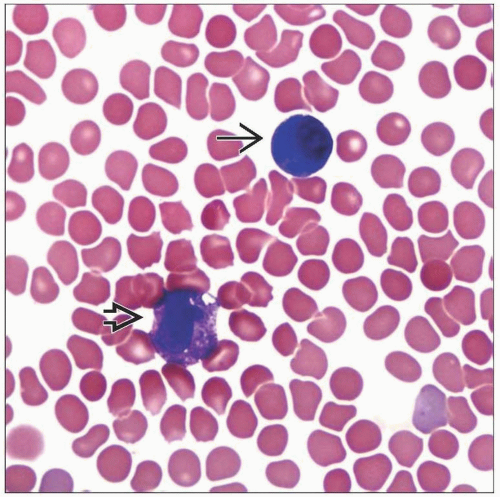Hantavirus Pulmonary Syndrome
Carla S. Wilson, MD, PhD
Key Facts
Etiology/Pathogenesis
Hantaviruses cause HPS
Each hantavirus has specific rodent reservoir
Sin Nombre virus infects deer mice in America
Transmission to humans occurs through infected animal excreta
Clinical Issues
Clinical findings in prodromal phase are insufficient to make diagnosis
Consider in patient with appropriate rodent exposure
Requires high index of suspicion
Infected individuals develop
Bilateral interstitial pulmonary infiltrates
Rapid onset of respiratory failure and cardiogenic shock
Treatment is primarily supportive
36% case fatality rate
Serologic tests are sensitive and specific
Enzyme-linked immunosorbent assays (ELISAs)
Cases reported from 31 states
Primarily rural areas
Microscopic Pathology
Combined peripheral blood findings are predictive of infection
Present if all 5 morphologic criteria are seen
If 4 of 5 morphologic criteria identified, highly predictive of diffuse pulmonary infiltrates
Top Differential Diagnoses
Acute respiratory distress syndrome
Other viral infections
 A scanning view of the peripheral blood smear from a patient with severe HPS shows hemoconcentration, an elevated white blood cell count with left-shifted neutrophilia, and immunoblasts. |
TERMINOLOGY
Abbreviations
Hantavirus pulmonary syndrome (HPS)
Sin Nombre virus (SNV)
Synonyms
Hantavirus cardiopulmonary syndrome
Four Corners disease
New World hantavirus infection
Definitions
Genus Hantavirus resides in family Bunyaviridae
> 22 different hantaviruses are pathogenic to humans
Old World strains of hantavirus
Primarily in Asia and Europe
Associated disease is hemorrhagic fever with renal syndrome
New World strains of hantavirus
Primarily in Americas
Associated disease is HPS
> 15 hantaviruses associated with HPS
HPS in North America
SNV strain is most common in US and Canada
Also Monongahela, New York, Black Creek Canal, and Bayou viruses in USA
ETIOLOGY/PATHOGENESIS
Environmental Exposure
Each hantavirus is closely associated with a specific rodent reservoir
SNV infects Peromyscus maniculatus or deer mouse
Resides in most of North America except few states in southeastern USA and southern Mexico
Cotton rat in Florida; swamp rat in Texas, Louisiana
Rodents have chronic persistent infections
Hantavirus transmission to humans
Occurs through infected animal excreta
Inhalation of contaminated aerosolized saliva, urine, or feces
SNV withstands desiccation for days
Inactivated by ultraviolet light outdoors
Higher concentrations of virus in closed areas
Infectious Agents
Hantavirus is spherical and encapsulated by bilayered phospholipid membrane
Averages 80-120 nm in diameter
Larger viral glycoproteins interact with receptors on host cells
SNV binds to β3 integrin proteins and possibly other receptors for cell entry
Hantaviruses primarily target vascular endothelial cells
Also infect alveolar macrophages and follicular dendritic cells
HPS Pathogenesis
Virus replicates in endothelial cells and macrophages
High levels of viral antigens in pulmonary vasculature
Induces immune activation with inflammatory cell recruitment to lungs
Macrophages and activated hantavirus-specific T cells produce excess cytokines
Causes changes in vascular permeability
Minimal direct viral cytopathic effects
CLINICAL ISSUES
Epidemiology
Incidence
HPS first recognized in May 1993 in Four Corners region of southwest USA
534 cases reported to CDC as of December 2009
Cases reported from 31 states
Stay updated, free articles. Join our Telegram channel

Full access? Get Clinical Tree





